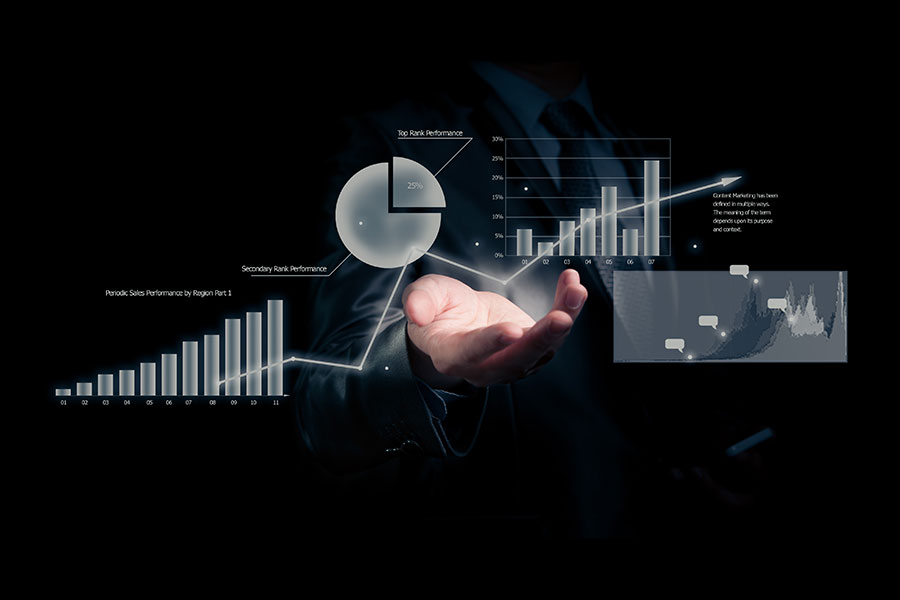‘Tis the Season for Holiday Sales!
For retailers, the Holiday sale is a complete marathon where the Black Friday weekend is simply the start of a month-long race to the finishing line.
In such events, sales don’t seem to be affected just by heavy discounts. A retailer has to enhance their customer’s experience through efficient store operations, product offerings, and promotions. Hence, the key strategy lies in understanding how these factors work together—and this all starts with Data and Analytics.
Saksoft with its unparallel expertise in Data and Analytics helps retailers to improve every area of the business – from sales and marketing to inventory management and store operations. It can help to spike up the sales, gather valuable insight regarding customer behavior and also identify areas that require increased marketing efforts. Such data-driven insights should be on a retailer’s radar to efficiently gauge the health and performance of the retail stores. In short, Saksoft can help you bridge the gap between traditional retail experience and future retail experience.
Impact of Analytics in Retail Business
Personalized Retail Experience for Customers
Understanding your customer’s behaviour and preferences is one of the most important aspects for boosting sales and enhancing their retail experience. By analyzing consumer data such as online and in-store habits, past shopping data, product category browsed, purchase timing, repeat purchase rate, average order value social media feedbacks and buying wish lists/carts, retailers can predict their buyer’s buying pattern, i.e, what they buy, when they buy, who are the best customers, and how they behave and react to their marketing, campaigns and promotions.
This would enable retailers to segment the shoppers into different buckets and provide targeted and highly customized offers to them at a granular level.
Retail analytics can also be utilized in identifying that customer who is not returning and the one who can be a potential long-term buyer. This helps the retailer to upsell or cross-sell. For instance, Anna buys X brand of coffee at the start of every month. Using predictive analytics, a retailer can now offer Anna a ‘Buy 2 Get 1 Free’ deal on coffee. Considering her consistency and buying behaviour, Anna will likely take advantage of this coupon, leading to more revenue for the company. This also augments customer loyalty by making them feel recognized and valued.
Data-Driven Pricing Strategy
Do you think why the prices of the products change so frequently?
By leveraging advanced analytics, store owners can observe multiple rapidly changing factors such as pricing offered by competitors, best-selling items, profit margins, etc to dynamically update the most optimal pricing to meet their sales and revenue targets. Unless the pricing is competitive enough, retailers stand to lose potential customers.
Data-driven pricing can help retailers attain optimal pricing for products that is both profitable for the business and lucrative for the discount shoppers. Your product’s features, brand reputation, and competitive pricing should allow your customers to keep coming back to you.
Optimized Inventory Management
With restrictions on movement, shortage of staff and increase in online orders, managing inventory and logistics are some of the biggest challenges for retailers during the pandemic. Every retailer wishes to have the right product at the right place at the right time. To achieve the retailer should know what to order, when to order and how much to order beforehand.
Data-Driven Analytics in inventory management eradicate problems such as stockout, over-stocking of products and slow process of order fulfillment. It also helps in forecasting demand, swift decision-making regarding inventory required to be stocked and estimating logistics needs. This enables companies to deliver a seamless experience to customers even during an outbreak.
Saksoft is helping retail companies rely on data for strategic decision-making by only using some information about customers and products. It is empowering businesses to see the road ahead instead of constantly exploring through the rear mirror. Retailers who use analytics gain a competitive edge, especially during sales. Through embracing retail analytics, a retailer can convert historical data into useful insights that would allow him/her to anticipate how the Holiday Sale will impact the business.





